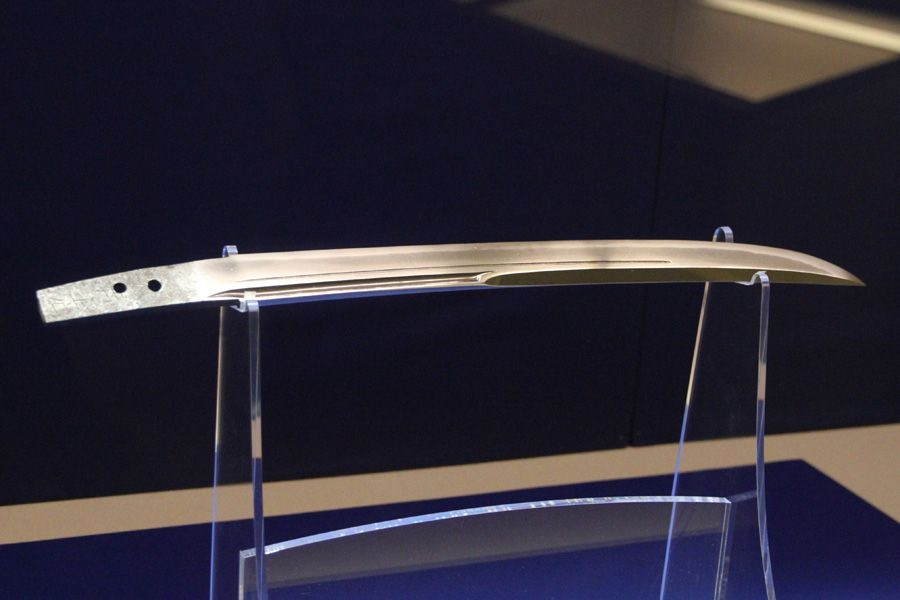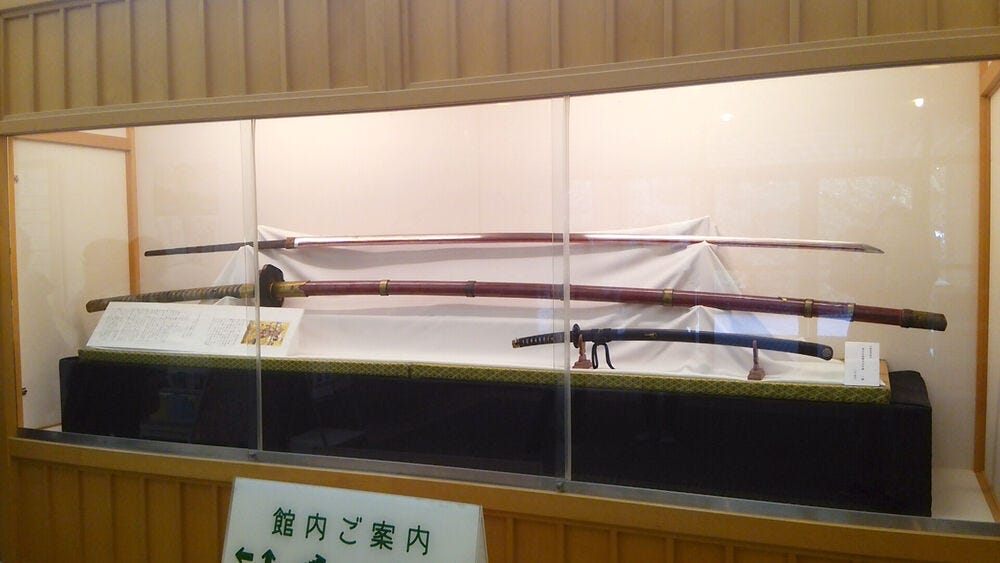
Japanese swords are hugely popular all around the world, and with good reason. They’re strong, deadly, different to most other swords, and they’re synonymous with the samurai. In fact, a Japanese game (and more) about swords is part of the reason I am writing Tales of Yamato. I’ve always found swords really interesting because… well they are really cool.
With my stories, I’ve had even more reason to write about them, tying in my knowledge of Japanese swords and my general appreciation for them, along with the people I’m writing about having them around them. I don’t focus on the lords because I find writing about the common people rather than the politics and the strict customs, plus many people focus on them. But of course they do appear from time to time, along with samurai, and others who would carry swords.
So here is more about them, and their usage in my stories.
Katana
刀 - かたな
Most people know Japanese swords to be called katana, however the word katana in Japanese means sword (not only Japanese ones), so I never use this word in my stories as it’s too vague.
Uchigatana
打刀 - うちがたな
An uchigatana is probably what most people think of if you say katana. They have a blade length of approximately 60–80 cm. These became most popular in the Muromachi period.
In my story One, Two, Three, I gave an uchigatana to the patrolman Iga-san, one named Hogomaru. I felt it the best type to give him, as tachi can be too long especially in close combat, but a wakizashi might not be long enough.
Tachi
太刀 - たち
Tachi are longer blades, sitting around 70–80 cm in length. Compared to an uchigatana, they also differ in length, degree of curvature, and how they were worn when sheathed by samurai. Even when uchigatana became more popular, tachi were worn by higher ranking officials.
In Faith of a God the samurai Masatoshi Houjou wears a tachi, although we never see it in use. As I had already written about uchigatana and wakizashi, I thought it’d be fun to give my samurai a tachi.
Wakizashi
脇差 - わきざし
Wakizashi are shorter blades than both tachi and uchigatana, with their length being around 30–60 cm. These swords are used as a back up to an uchigatana (and worn alongside them by a samurai) as well as working better in close quarters combat. Wakizashi were also used for beheading and seppuku.
Of all the swords, I have a fondness for wakizashi and I wanted to take the information I knew and use it well in at least one of my stories. In Lonely Waters the shugo-daimyo wears a wakizashi inside and proceeds to use it, both in close quarters and is then used in a beheading.
Tantou
短刀 - たんとう
Tantou are one of the smallest blades, sitting approximately around 15–30 cm in length. Despite their size, they are just as deadly as their larger counterparts. Samurai carried them, and before the uchigatana/wakizashi combination became popular, it was a tantou/tachi combination. Some women also used to carry a small tantou also called a kaiken in their kimono, used for self-defense and ritual suicide by slashing their neck. Lower class criminals also carried them, concealed, as they were not permitted to carry weapons.
I have featured a tantou in Beneath Tsukuyomi and Two Lives, where my character Hotaka owns one, and keeps it at hand for use in close quarters. It was also the first sword I wrote about, wanting to focus on the actions made with the tantou, rather than the tantou itself.
Naginata
薙刀 - なぎなた
Naginata are polearm weapons, with a long blade at one end. In length they are around 205–260 centimetres and the blade length 85–100 centimetres. They were very useful on the battlefield, however it wasn’t just men who wielded naginata. A smaller, lighter version of a naginata, also called a konaginata (with the larger being a oonaginata) was used by women to protect the home.
Not wanting to leave my Japanese women out, we see a naginata in A Haiku of the Heart, where Rika protects her home, but also uses martial arts to hone her mind away from the distress brought by her past with children. I wanted to feature it more, however couldn’t find a natural way to bring it in. That doesn’t mean there won’t be more in the future however!
Oodachi
大太刀 - おおだち
Sometimes also called an ootachi or a nodachi, the oodachi is the largest of swords. Oodachi range in size with a blade length between 90 cm and 377 cm, with some of the largest being almost unwieldable. These swords were too heavy to be worn at the hip and instead were held on the back, with unsheathing happening before battle. Oodachi were used more for intimidation, and for striking horses with their downward strikes.
In Faith of a God we see a oodachi named Murasame, sent by the goddess Amaterasu. As it’s a sacred sword, I wanted it to have a great length, but not be too unwieldly for my characters. For this, I looked at many known oodachi and their lengths, as well as the heights of the people that would carry it. It was great having a sword focused story, as swords are so synonymous with Japanese history, as well as creating a sword strong enough to strike down a god.
Shortening and naming
In the past there were many sword who were changed in length for their new masters, and some even changed type. The wakizashi Namazuo Toushirou (38.5 cm long) used to be a naginata before being reforged into a wakizashi.
Sword names were also very important. Many swords even had multiple names, changed when they were passed to another, or after a great feat. This happens in The Cry of the Raijuu, where the sword Chidori—which means a thousand birds—is renamed to Raikiri—lightning cutter—after striking down a raijuu.
Iga-san’s uchigatana also was named Hogomaru, which is a name I picked out meaning protective circle. Swords were also named after the characteristics they showed, such as their shape or even their pattern—hamon—in the metal.
To pick Murasame’s name, I looked to legendary swords, trying to pick a lesser prominent sword than the most famous swords who’s history is recorded.
This is just a brief overview of swords as there is so much out there on both the types, uses, and history of them all. There is no doubt that I’ll be featuring them in future in my stories too, as I enjoy them so much.









